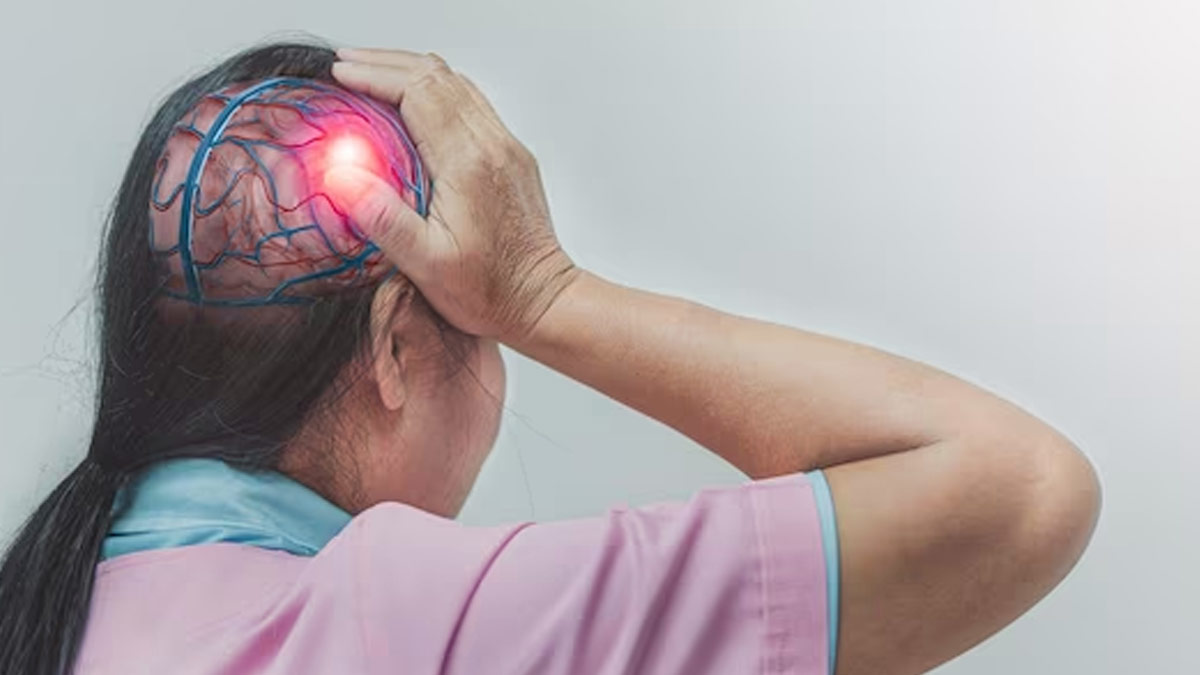
Stroke is among the leading causes of death and disability. In India, it is the second most common cause of death, accounting for 1.85 lakh cases annually, with one stroke occurring every 40 seconds and one stroke death every 4 minutes.
Table of Content:-
Over the years, the lifetime risk of developing a stroke has increased by 50%, wherein one in four people are currently estimated to have a stroke in their lifetime, according to the Global Stroke Fact Sheet released in 2022.
The good news is that 80% of stroke cases are preventable, according to the US Centers for Disease Control and Prevention (CDC). But unfortunately, many are not aware of the strategies that can help prevent a stroke or reduce the risk of death and disability from stroke. Some even fail to recognise the signs of a stroke. But not to worry, as we have got you covered!
What Causes A Brain Stroke?

A stroke has two primary causes: an ischemic stroke and a hemorrhagic stroke.
An ischemic stroke occurs when there is reduced blood flow to the brain due to a narrowed or blocked artery. This mainly happens when a blood clot or fatty deposits clog an artery leading to the brain.
A hemorrhagic stroke occurs when a blood vessel in the brain leaks or bursts. Some of the causes include head injuries, uncontrolled high blood pressure, and aneurysms.
While a stroke can occur in anyone, some people may be more at risk of the condition.
In an interaction with the OnlyMyHealth team, Dr Amit Shah, Consultant Neurologist, SRV Hospitals, Goregaon, says that there are two categories of risk factors for stroke: modifiable and non-modifiable factors.
While non-modifiable risk factors include age, gender, and family history, modifiable risk factors include aspects of our lives that we can control through lifestyle modification and medical intervention. This includes a healthy diet, regular exercise, quitting smoking, limiting alcohol consumption, and managing chronic conditions.
Be Fast At Identifying The Warning Signs

Understanding and addressing your risk factors is a great way to mitigate your risk of stroke. But it is also important to be aware of the warning signs that may help you take immediate action.
B.E. F.A.S.T. is a tool to help you recognise the signs of a stroke and react quickly. In fact, a 2020 study published in the South African Journal of Critical Care found that FAST stroke assessment has a 40.4% overall accuracy.
Here's what each letter stands for:
B for Balance: Check if the person has sudden trouble with balance or coordination.
E for Eyes: See if the person is experiencing blurred or double vision, or a sudden loss of vision in one or both eyes.
F for Face: Does one side of the face droop or become numb? Ask the person to smile and see if it's uneven.
A for Arm: Check if the person has any weakness in the arm.
S for Speech: Is their speech slurred, are they unable to speak, or is it hard to understand? Ask them to repeat a simple sentence.
T for Time: Time to call emergency services
Also Read: Why Do Women Have A Higher Risk Of Stroke Than Men
How To Reduce The Risk Of A Stroke

Here are some effective ways to reduce the risk of stroke:
- Keep your blood pressure within a healthy range.
- Maintain healthy cholesterol levels.
- Eat a balanced diet low in saturated and trans fats.
- Keep blood sugar levels in check.
- Engage in regular physical activity.
- Quit smoking
- Limit alcohol consumption.
- Maintain a healthy weight.
- Drink plenty of water throughout the day.
- Schedule regular check-ups with a healthcare provider.
If prescribed medication for conditions such as high blood pressure, cholesterol, or atrial fibrillation, take it as directed by a healthcare provider.
Conclusion
Stroke is inevitable, especially for people with underlying medical conditions like high blood pressure, high cholesterol, and diabetes. Smokers, alcohol consumers, and those who follow an unhealthy diet and have a sedentary lifestyle are also at increased risk. However, 80% of strokes are preventable, which is why taking the necessary steps can help reduce your risk. Moreover, remember to identify the signs of stroke, as they can often be missed, leading to a delayed diagnosis. Recognising stroke on time can provide proper treatments and improve outcomes.
Also watch this video
How we keep this article up to date:
We work with experts and keep a close eye on the latest in health and wellness. Whenever there is a new research or helpful information, we update our articles with accurate and useful advice.
Current Version